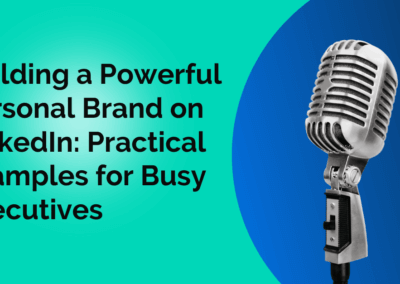Writing isn’t something that happens overnight. You don’t suddenly wake up and start writing like Hemingway. Which probably isn’t even your goal. Your B2B company is all about marketing to your prospects. And because you’re a savvy inbound marketer, you know that the way to do this is through remarkable, engaging, valuable content.
Let’s take a look at some tips that will help you be a better B2B writer and win more prospects.
1. Keep your reader in mind
This is the most important tip we can give, so listen up.
You are writing to your potential or current customers; don’t get sidetracked with anecdotes that will neither interest them or provide any real value to them. Put yourself in their shoes. Ask yourself if what you are saying is something that will be rewarding to them. If it isn’t, craft it over again.
Also, because inbound marketing is all about rewarding and engaging content, be wary about how much “selling” you’re doing in your content. Blogs, articles, eBooks, guides, whatever it is you’re writing, there’s a fine line between selling your product or service and providing valuable information to your customers. The vast majority should be content that informs, rewards, and educates.
2. Show, don’t tell.
“Show, don’t tell” is a widely known rule of writing. It fits in wonderfully with your inbound marketing strategy also. If you are writing content that is engaging and remarkable, it should be painting a picture for your customers, rather than simply telling them about the boring details. Make those details come alive, here’s how:
- Be as descriptive as possible (without overdoing it). For example, don’t just say medical supplies, be specific.
- Create videos. Video marketing services are the future of B2B marketing, and they provide an excellent way for you to show prospects your company rather than tell them about it.
- Make it real. Whenever possible, inject anecdotes and relatable stories that your audience would find compelling.
3. All about readability.
Most online readers take one look at an article, skim it, decide if it’s worth their time or not, and then either read it or move on. In that skimming process, readers are looking for readability. Make it more readable by:
- Using bulleted and numbered lists (like this one).
- Highlight, bold, italicize wherever necessary.
- Shorten paragraphs—even a one sentence paragraph is acceptable; it makes an idea or point stand out from the rest.
- Include images—images break up text and add a visual to what is being described. Simply, they make a piece more interesting.
4. Start strong, finish strong.
Arguably the most important parts of any piece of content (aside from the title) are the beginning and the end. Upon first glance, it’s clear whether you want to continue reading or not. Have you captured your reader’s attention in your first sentence or paragraph? You don’t stand a chance of getting them to the second if you don’t. Starting with a question or a relatable story is a good way to pull them in.
Ending your piece is just as important as starting it; it leaves a lasting impression. Have you tempted your potential prospect to want to dig deeper and learn more about your company? Or at the very least, have you enticed them to read another blog or article?
Evaluate your content marketing generation strategies and decide if they could use a revamp. That’s the beauty of marketing, it is constantly changing and we are constantly adapting and embracing it. If you aren’t on board, you risk losing your potential customers to your competitors who are generating funnier, more informative, and more engaging content than you are. Don’t let that happen…be a better B2B writer!
{{cta(‘d561c4e2-b6da-4cb8-8c34-9df61f48abaf’)}}



